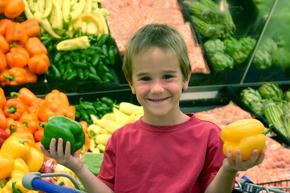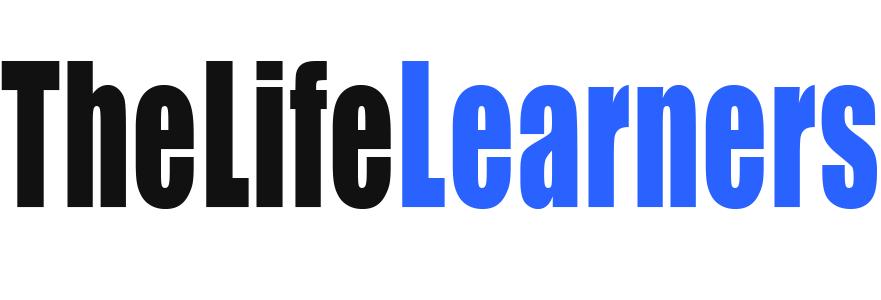
Instructing alternatives current themselves each day, in practically any context. Mother and father and academics alike are able to offering participating, difficult, and enriching moments meant to increase and apply studying to real-life conditions. Right this moment we aren’t speaking about studying within the classroom, we’re heading to the grocery retailer! This text might be discussing a number of methods to hitch the real-life buying expertise with mathematical ideas and reasoning. This situation might be profitable each inside and out of doors of a classroom setting.
Computing within the Bulk Meals Aisle
The grocery retailer is a improbable place to use mathematical ideas taught at school. These options might be carried out by a father or mother on a household buying journey, on a category discipline journey to the shop, or modified to be used in a classroom setting. Start by heading over to the majority meals or produce aisle of your native retailer. On the best way, evaluation or introduce the idea of scale measurement and normal items. When you get to that part, have youthful kids apply weighing objects and studying the size. Older youngsters can take a look at the value per unit, weigh the objects, and mentally compute or estimate the entire value. Ensure that they maintain the value per pound or unit in thoughts as they determine the totals.
Evaluating within the Sweet Aisle
Worth per unit may also be used when evaluating costs, values, and price. Uncover this as you progress alongside to the sweet aisle. Right here, youthful kids can find the objects that value essentially the most and least per pound. Ask your buyers to estimate or calculate how way more one sweet merchandise prices than the opposite. Older learners can examine numerous candies by way of weight and value per unit to find out which of two objects is a greater worth. Lengthen this concept by having youngsters examine pre-packaged sweets to these discovered within the bulk sweet part.
Calculating Coupon Financial savings
Coupons and sale objects are good if you need to apply calculating percentages. Begin by making certain that learners know {that a} share is part of an entire, similar to a decimal, or a fraction. You’ll most likely want to indicate youthful buyers how percents, fractions, and decimals relate. Deliver a calculator to the shop to have youngsters within the center elementary grades compute the financial savings of things which might be discounted by percentages. Older buyers can examine the info discovered on the retailer to find out if the discounted costs are actually one of the best worth.
Lower out grocery retailer coupons and maintain observe of how a lot cash is saved with cash. For instance, in the event you save 20 cents on detergent. Ask learners what could possibly be bought utilizing the financial savings from the coupon. A pack of gum? How a lot cash could possibly be saved with three, 4, or 5 coupons? How might that cash be counted out in cash and payments? What could possibly be bought with the financial savings? {A magazine}? What share of the unique value is the coupon price?
Pondering Percents
Working from the concept percents, fractions, and decimals are all associated as a result of all of them describe a component/complete relationship, have youngsters discover how they know or can present the concept. They will use scales, unit value, and normal measurements to indicate you that ¼ cup is just like .25 of a pound and to 25% of a 100. Every measurement reveals one fourth of any complete merchandise.
Recognizing Shapes
Shapes are in all places, and the grocery retailer isn’t any exception. Begin this exercise by reviewing airplane and prismatic shapes. Then have the children go on a form scavenger hunt the place they test off every form on their record and write the title of the item subsequent to its form match. This may be carried out with colours, letters, phrases, and numbers. For instance, a cereal field is a rectangle, a can of soup is a cylinder, and an orange is a sphere.
Counting on the Examine Stand
Lots of math occurs on the test stand. Have your youngster estimate the entire value of things in a buying cart. A simple option to estimate totals is to assign a mean value to every merchandise. When you’ve got 10 objects and the typical value for every merchandise is $2, the entire value estimate could be about $20. Utilizing the estimated complete, ask your youngster:
- If I’ve 10 one greenback payments, what number of of those payments will I’ve to offer the clerk?
- If I’ve a twenty-dollar invoice, how a lot change ought to I obtain?
- If I get cash again, what cash will I get?
- On the checkout counter, what’s the precise value?
- How does this examine to your estimate?
- If you pay for the objects, will you get change again?
- Depend the change along with your youngster to verify the change is right.
Play with the Packaging
Mathematicians name the flat, unfolded designs of three-dimensional shapes nets. Use grocery retailer packaging to find out about nets. There are three steps to this course of. Learner will first predict, then create, after which draw a set of nets. They are going to focus on what form they suppose every of the objects will make as soon as they’re flattened. Subsequent, they’ll take the objects aside to see the online. It’s also possible to unfold a cardboard field, with out exhibiting the kid the unique field. Ask him to think about what the unique field regarded like, and what form will it’s when it’s put again collectively. Have the kid hint all of the faces of a field, or another three-dimensional form by laying each aspect, high, and backside on the paper to be traced. After they examine their shapes, see if they will draw a internet (the unfolded model) of the field. Unfold the field to see how carefully the drawn internet corresponds to the precise internet. What would the online of a pyramid seem like? This can be a good exercise to make use of when discussing quantity, capability, space, or perimeter.
Adapting for the Classroom
As said initially of this text, most of the ideas which might be used within the context of buying may also be used within the classroom setting. You don’t need to go nuts and make a classroom retailer, simply deliver within the objects discovered at a retailer. Tangible, concrete objects present in a real-life context make classroom math ideas extra accessible to youngsters. Herald a digital or hanging scale, examine unit value on actual packages of sweet (empty is okay). Focus on airplane and prismatic shapes utilizing actual cans and cereal containers. Put up sale indicators across the room. Learners can journey from signal to signal to find out the share saved on classroom objects in a mock comparability buying exercise. Show retailer adverts and coupons; have college students determine how a lot cash they might save in the event that they purchased sure quantities of the sale merchandise. It’s also enjoyable and academic to have little ones weigh and measure utilizing actual measuring cups. No matter buying actions you determine to do, remember to take the time to have the category focus on how every factor they’ve discovered that day can be utilized in the true world.
Albert Einstein stated, “Schooling is what you bear in mind after you neglect all the things you’ve discovered.” If our youngsters can’t join their studying to actual life, they’re extra prone to neglect the ideas we have now so painstakingly tried to show them. Mother and father and academics can take an actual or digital discipline journey to the grocery retailer to make sure that youngsters join math ideas with actual life. See the concepts under for extra methods to deliver math to life.
Examine Extra Math Concepts:
Store for Financial savings
A beautiful lesson that applies math to buying abilities. The unit revolves round 5 totally different exercise stations that have interaction learners in real-world math via receipt calculations, value comparisons, and estimation.
Shopper Math
Being a smart shopper undoubtedly includes using math abilities. It additionally will increase considerate selection making, financial understanding, and analytical pondering abilities. Teenagers, work via a collection of actions and hands-on demonstrations to find how helpful math actually is. They will apply utilizing percents, ratios, items of measure, and drawback fixing.
Cooking up Math
This can be a actually neat lesson that employs a real-life situation to assist learners apply math issues involving fractions. Use the useful resource as is, or incorporate it with any of the concepts seen on this article. Learners will double, triple, and half recipes.

